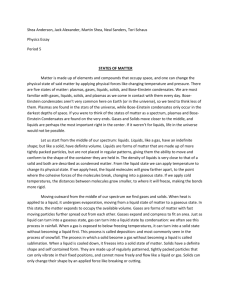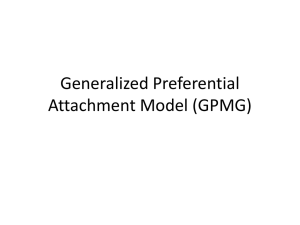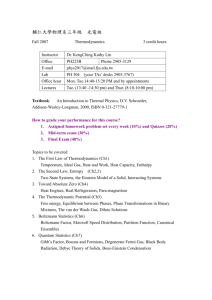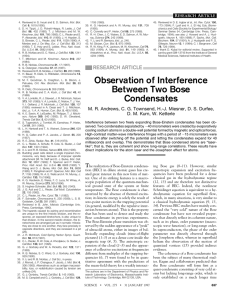SCIENCE CURRICULUM MAPPING-Unit Plan Timeline Subject
advertisement
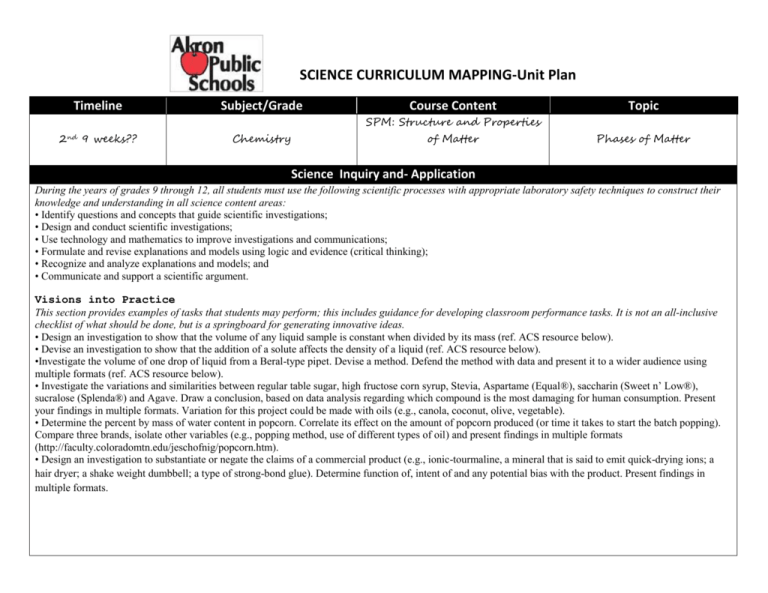
SCIENCE CURRICULUM MAPPING-Unit Plan Timeline Subject/Grade Course Content Topic SPM: Structure and Properties 2nd 9 weeks?? Chemistry of Matter Phases of Matter Science Inquiry and- Application During the years of grades 9 through 12, all students must use the following scientific processes with appropriate laboratory safety techniques to construct their knowledge and understanding in all science content areas: • Identify questions and concepts that guide scientific investigations; • Design and conduct scientific investigations; • Use technology and mathematics to improve investigations and communications; • Formulate and revise explanations and models using logic and evidence (critical thinking); • Recognize and analyze explanations and models; and • Communicate and support a scientific argument. Visions into Practice This section provides examples of tasks that students may perform; this includes guidance for developing classroom performance tasks. It is not an all-inclusive checklist of what should be done, but is a springboard for generating innovative ideas. • Design an investigation to show that the volume of any liquid sample is constant when divided by its mass (ref. ACS resource below). • Devise an investigation to show that the addition of a solute affects the density of a liquid (ref. ACS resource below). •Investigate the volume of one drop of liquid from a Beral-type pipet. Devise a method. Defend the method with data and present it to a wider audience using multiple formats (ref. ACS resource below). • Investigate the variations and similarities between regular table sugar, high fructose corn syrup, Stevia, Aspartame (Equal®), saccharin (Sweet n’ Low®), sucralose (Splenda®) and Agave. Draw a conclusion, based on data analysis regarding which compound is the most damaging for human consumption. Present your findings in multiple formats. Variation for this project could be made with oils (e.g., canola, coconut, olive, vegetable). • Determine the percent by mass of water content in popcorn. Correlate its effect on the amount of popcorn produced (or time it takes to start the batch popping). Compare three brands, isolate other variables (e.g., popping method, use of different types of oil) and present findings in multiple formats (http://faculty.coloradomtn.edu/jeschofnig/popcorn.htm). • Design an investigation to substantiate or negate the claims of a commercial product (e.g., ionic-tourmaline, a mineral that is said to emit quick-drying ions; a hair dryer; a shake weight dumbbell; a type of strong-bond glue). Determine function of, intent of and any potential bias with the product. Present findings in multiple formats. Looking Back Looking Forward In middle school, solids, liquids and gases were explored in relation to the spacing of the particles, motion of the particles and strength of attraction between the particles that make up the substance Content Standards CHEM.SPM. 12 Phases of Matter Key Ideas Content Elaboration In this course, plasmas and Bose-Einstein condensates also are included. Plasmas occur when gases have so much energy that the electrons are stripped away; therefore, they are electrically charged. In Bose-Einstein condensation the atoms, when subjected to temperatures a few billionths of a degree above absolute zero, all coalesce to lose individual identity and become a “super atom.” Just as plasmas are super-hot atoms, Bose-Einstein condensates are the opposite – super-cold atoms (see Note). The forces of attraction between particles that determine whether a substance is a solid, liquid or gas at room temperature are addressed in greater detail with intermolecular chemical bonding later in the course. Note: The advancement of technology makes it possible to extend the boundaries of current knowledge and understanding. Consequently, Bose-Einstein condensates were only recently created in the laboratory (1995), although predicted more than 80 years ago. Detailed instruction of Bose-Einstein condensates or plasmas is not required at this grade level. This information is strictly for recognition that new discoveries are continually occurring, extending the realm of current understanding in science. Co Misconceptions Phase changes are examples of chemical reactions. Changes of state include freezing, boiling, evaporation, melting, condensation, and sublimation. One characteristic that changes of state do share with chemical changes: energy is either added or removed from the system, unlike other physical changes. Instructional Input Strategies: Details of activities, instructional model to develop skills to meet learning objective x Modeling (I do) x Differentiation _ _ below level _ _ on-level _ _ enrichment x x Guided practice (we do) Inquiry-based Cooperative grouping x Direct instruction Problem-based Other: Independent Writing, artistic illustrations Materials/Resources: Details of materials to support instruction and learning x Text : Holt. Chemistry Visualizing Matter 2000 Page # :6,7, 396,397 Safari Montage:__________________________ ______________ x Website : password protected http://www.akronschools.com/dotCMS/login?referrer=/departments/ci/teachingand-learning/science/curriculum/teacher-resources.dot Graphic Organizers: _ Vocabulary ____________ Manipulative: _________ x Type of Technology: _________ x Labs/activities: __________________________ Other: __________________________ ___________________ __________ Additional Resources Diverse Learners Strategies for meeting the needs of all learners including gifted students, English Language Learners (ELL) and students with disabilities can be found at these sites: http://education.ohio.gov/Topics/Other-Resources/Limited-English-Proficiency; http://education.ohio.gov/Topics/Special-Education/Students-withDisabilities. Resources based on the Universal Design for Learning principles are available at www.cast.org. Classroom Portals Macro to Micro Structures is a program produced by Annenberg that deals with the conceptualization of micro processes and environments. It involves teaching chemistry through macro phenomena, which can be observed, and micro processes, which occur on the molecular level and can only be imagined. Instructional Strategies and Resources This section provides additional support and information for educators. These are strategies for actively engaging students with the topic and for providing handson, minds-on observation and exploration of the topic, including authentic data resources for scientific inquiry, experimentation and problem-based tasks that incorporate technology and technological and engineering design. Resources selected are printed or Web-based materials that directly relate to the particular Content Statement. It is not intended to be a prescriptive list of lessons. • Chem4Kids, University of Colorado at Boulder has a websites devoted to providing more information about Bose-Einstein condensates. • “Ultra Cold Atoms” is an interview with a scientist who studies Bose-Einstein condensates. He describes the process needed to form Bose-Einstein condensates and the unusual properties of super-cooled matter. • “How Low Can You Go” is an interactive simulation of the process by which substances can be cooled to absolute zero. • ACS Small-Scale Laboratory Assessment Activities were prepared by Robert G. Silberman and Lucy T. Eubanks in association with the American Chemical Society Division of Chemical Education Examinations Institute in 1996 and provide excellent inquiry laboratory assessments. The Visions into Practice examples referenced above have been adapted from activities presented in this book. (unable to find this resource at this time) • “Alkali metals” Discover the explosive results when water and alkali metals come together - and the science behind the reaction. Video. • The Periodic Table of Data is an interactive periodic table. Students can select the properties they wish to view. • Atoms and Molecules is a program produced by Annenberg that deals with teaching the very first steps of chemistry. It introduces the basic building blocks – the atoms – which, through their properties, periodicity and binding, form molecules. • Masterminding Molecules seeks to develop logic and reinforce the principles of fair testing. It introduces the importance of concepts such as size, polarity and drug-like properties in the discovery of new medicines. Topic Outline/Objectives Procedures: Details of the sequence of instruction Lesson 1: Standards: Resource: Objectives: Lesson2: Standards: Resource: Objectives: Lesson 3: Standards: Resource: Objectives: Lesson 4: Standards: Resource: Objectives: Lesson 5: Standards: Objectives: Resource: Lesson 6: Standards: Resource: Objectives: Lesson 7: Standards: Resource: Objectives: Lesson 8: Standards: Resource: Objectives: Lesson 9: Standards: Resource: Objectives: Lesson 10: Standards: Objectives: Resource:

